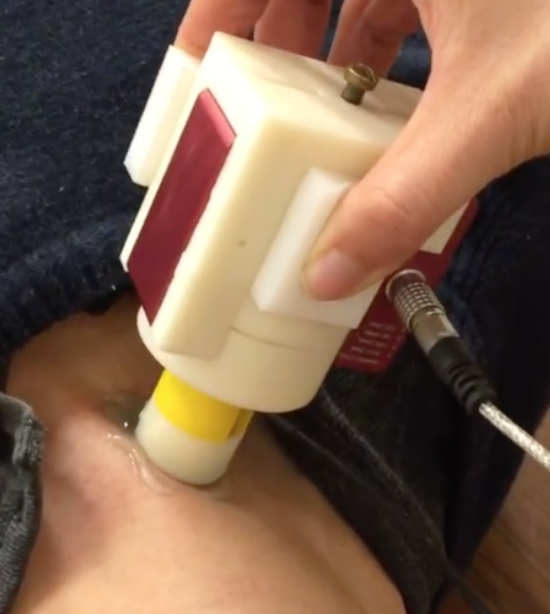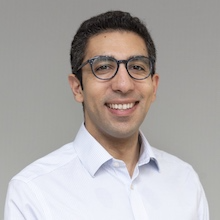Projects Outside the Lab
Anticoagulation monitoring technologies for low-resource settings
Anticoagulation therapy is essential for the prevention of fatal blood clots, especially following a heart attack, stroke, or pulmonary embolism. Patients taking anticoagulation drugs require regular clinical monitoring of their blood coagulation status to inform proper drug dosing and maintain a safe homeostasis of coagulation and bleeding. Anticoagulation monitoring is not well suited for low-resource settings because patients are required to regularly commute to community hospitals at least three times per week to get their blood tested. In rural Kenya, for example, patients live on average two hours from a community hospital, which confers a time and transportation cost burden to the patient and their family. We engineered anticoagulation monitoring technologies that enable the affordable, portable assessment of a patient’s coagulation status rapidly and easily within low-resource settings. Our device uses optical techniques and integrates with standard cellphone cameras to measure blood clotting time from only microliters of capillary blood. The team comprises of HST graduate students Mohamad Najia and Shriya Srinivasan. We are collaborating with Dr. Rachel Rosovsky, an expert hematologist at MGH and Dr. Aparna Ramanathan, an MGH Global Health Fellow who practices half the year at Sagam Community Hospital in Kenya.
Non-invasive assessment of jugular venous pressure
 Central venous pressure (CVP) is a clinically significant indicator of a patient’s intravascular volume (IVV) status. Currently, the only means to accurately assess CVP is to perform invasive right heart catheterization with a pressure transducer. Jugular venous pressure (JVP), however, is a close approximation of CVP and enables opportunities for noninvasive measurements of venous pressures. We have developed a handheld device comprising of a single crystal ultrasound probe and a coupled load cell to measure JVP based on the force necessary to collapse the internal jugular vein (IJV). Proof-of-concept experiments demonstrate that single crystal ultrasound can detect the IJV in basal and collapsed states, as compared to gold-standard sonography. Assessment of JVP in six healthy human volunteers was physiologically consistent with and sensitive to various postural changes. This noninvasive assessment of JVP could prove valuable in informing rapid clinical decision-making across various pathologies and conditions of dysregulated IVV homeostasis.
Central venous pressure (CVP) is a clinically significant indicator of a patient’s intravascular volume (IVV) status. Currently, the only means to accurately assess CVP is to perform invasive right heart catheterization with a pressure transducer. Jugular venous pressure (JVP), however, is a close approximation of CVP and enables opportunities for noninvasive measurements of venous pressures. We have developed a handheld device comprising of a single crystal ultrasound probe and a coupled load cell to measure JVP based on the force necessary to collapse the internal jugular vein (IJV). Proof-of-concept experiments demonstrate that single crystal ultrasound can detect the IJV in basal and collapsed states, as compared to gold-standard sonography. Assessment of JVP in six healthy human volunteers was physiologically consistent with and sensitive to various postural changes. This noninvasive assessment of JVP could prove valuable in informing rapid clinical decision-making across various pathologies and conditions of dysregulated IVV homeostasis.
A surgical clamp to correct ptosis
 We invented a patented surgical device to safely restore vision in patients with ptosis, while measurably reducing the time and skill needed by the surgeon to perform the surgery; mitigating patient risk; and decreasing surgical revision rates. Our design consists of a clamp that excises the excess muscle that causes the drooping eyelid while simultaneously sealing the incision. Such technology mitigates the root cause of surgical complications.
We invented a patented surgical device to safely restore vision in patients with ptosis, while measurably reducing the time and skill needed by the surgeon to perform the surgery; mitigating patient risk; and decreasing surgical revision rates. Our design consists of a clamp that excises the excess muscle that causes the drooping eyelid while simultaneously sealing the incision. Such technology mitigates the root cause of surgical complications.
Computing for engineers
As an undergrad at Georgia Tech, I was a teaching assistant for an introductory computer science course tailored toward engineering students. The course covered computing algorithms, data structures, data processing and computing theory in a MATLAB computing environment. My lecture slides that I’ve refined over six semesters of teaching the course are freely available below:
